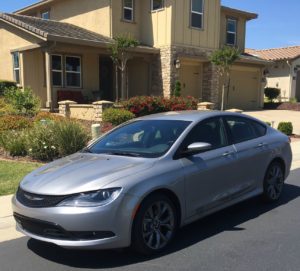In an era where redesigns are common place, Mitsubishi has stubbornly refused to provide a total makeover for the Lancer. It’s been a decade since the Mitsubishi Lancer compact sedan had a redesign.
To Mitsubishi’s credit, changes have taken place over the past 10 years – some of them major ones. The 2016 Lancer features a restyled front end, a cabin with new seat fabric, and standard features that include 16-inch alloy wheels, LED daytime running lights, automatic air conditioning, and fog lights. Mitsubishi also says its continuously variable automatic transmission has been updated to improve gas mileage and performance.

Despite the additions, there are frankly better compact sedans on the market. Yet that doesn’t mean the Lancer hasn’t found a niche. It offers acceptable pricing, a solid list of standard features, and four different models in its lineup. The Lancer also comes with a 10-year, 100,000 drivetrain warranty and has an all-wheel drive option.
The problem for the Lancer is the compact sedan category is loaded with some great choices. It includes the Honda Civic, Mazda 3, Ford Focus, Volkswagen Jetta, Hyundai Elantra, Nissan Sentra and Chevrolet Cruze.
The Lancer has four different trim variations in the ES, SE, SEL and GT. Mitsubishi has discontinued the turbocharged Ralliart model.
2016 Mitsubishi Lancer
- Performance: 2.0-liter, four-cylinder, 148 horsepower; 2.4-liter, four-cylinder, 168 horsepower
- Mileage estimate: 24-35 mpg; 23-31 mpg
- Price: $17,595 to $22,495
- Warranty: 5 years/60,000 miles; drivetrain 10 years/100,000 miles; corrosion 7 years/100,000; roadside assistance 5 years/60,000
Although solid in many areas, the ES trim is a pretty modest offering, the type of vehicle that won’t create a lot of excitement. Both the SE and SEL trims feature all-wheel drive, while the GT has a sport-tuned suspension and a nine-speaker Rockford Fosgate audio system with a subwoofer.
The Lancer ES features a 2.0-liter, four-cylinder engine that creates 148 horsepower and 145 pound-feet of torque. The performance is fine for commuter-type driving, but the vehicle is sluggish on hills and goes 0-60 mph in 8.8 seconds.
The rest of the Lancer lineup has a 2.4-liter, four-cylinder that generates 168 horsepower and 167 pound-feet of torque. These models are clocked going 0-60 mph in 7.7 seconds and give the driver a somewhat sporty feel.
The Lancer ride ranks below much of its competition. All models lack overall agility and don’t provide much of a fun factor. The engine is somewhat noisy and the Lancer doesn’t absorb bumpy surfaces very well.
Both head and leg room are solid for front seat occupants and so is the comfort. However, taller drivers will not like the absence of a telescoping steering wheel. Two adults will be fine in the back seat, but add another person and forget about room and comfort. The trunk room – 12.3 cubic feet of cargo capacity – is average for a compact sedan.
The interior features a practical, easy setup. The climate controls are large knobs and within close proximity to the driver. There is an abundance of hard plastic and note that one seemingly needs to slam the doors to have them totally shut, which gets very annoying.
As mentioned previously, there are many good selections in the compact sedan category. Unfortunately for the Lancer, it’s a very average vehicle that still needs to improve if it wants to be become one of the stars in this category.
Jeffrey Weidel can be reached at [email protected]. Follow him on Twitter at @jeffweidel. His “Weidel on Wheels” auto reviews are featured periodically on this website at www.tahoeskiworld.com.